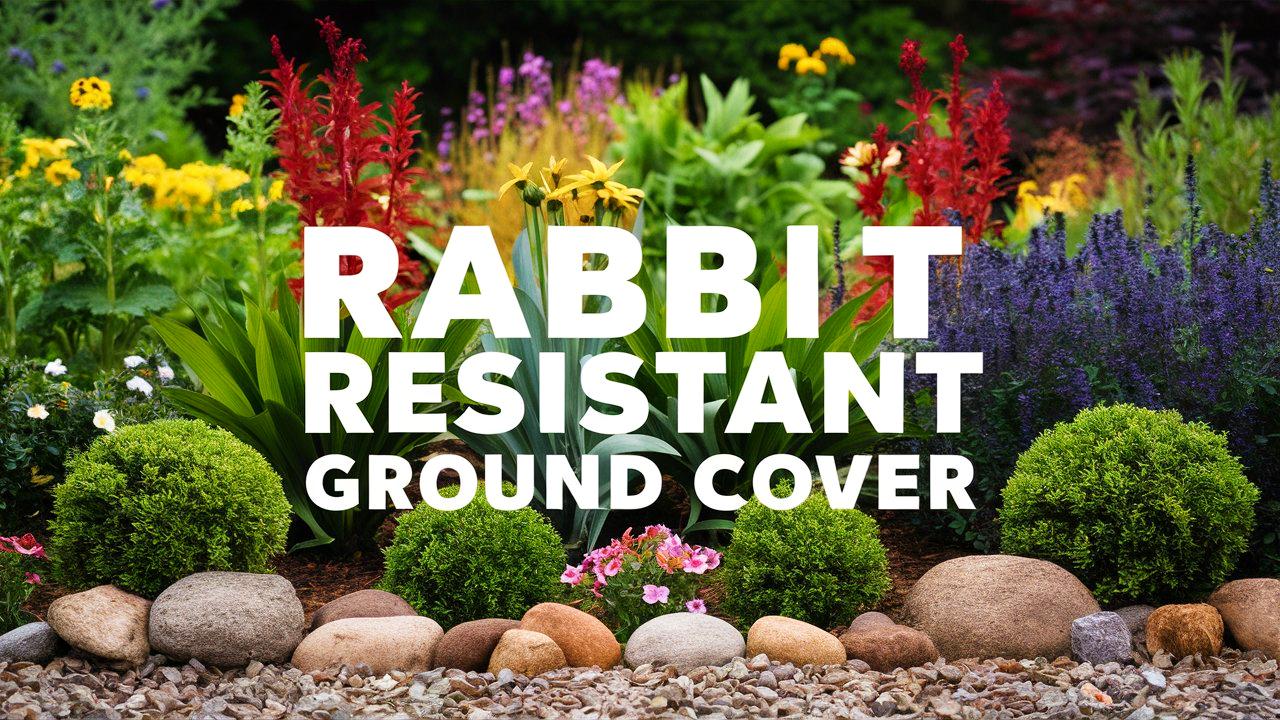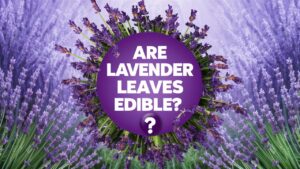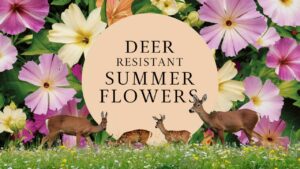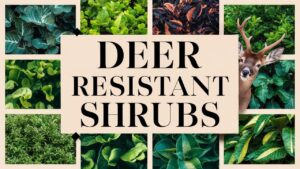Rabbit populations are prevalent in many areas, and they can wreak havoc on a garden without the gardener’s knowledge until it’s too late. One practical solution is to choose rabbit-resistant ground cover plants that not only enhance the visual appeal of your landscape but also deter these furry intruders.
In this comprehensive guide, we will explore a variety of ground cover plants, detailing their resistance to rabbits, growing conditions, and beneficial characteristics, helping you to create a beautiful and sustainable garden.
Astilbe
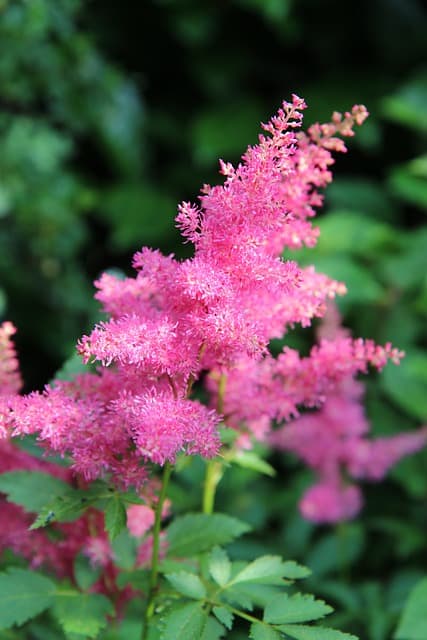
Astilbe is a perennial plant celebrated for its feathery plumes of flowers that resemble fluffy clouds above rich green foliage. These plants thrive in woodland gardens where shaded areas are predominant. Astilbe flowers can be found in shades of pink, red, white, and purple and bloom during the late spring to early summer.
The leaves of Astilbe are not particularly appealing to rabbits due to their coarse texture and compound structure. Additionally, Astilbe prefers moist, well-drained soil, making it an excellent strategy for those rainy or shady spots in the garden. By incorporating Astilbe into your landscape, you will not only deter rabbits but also provide vibrant color and texture to your garden design.
Sedum
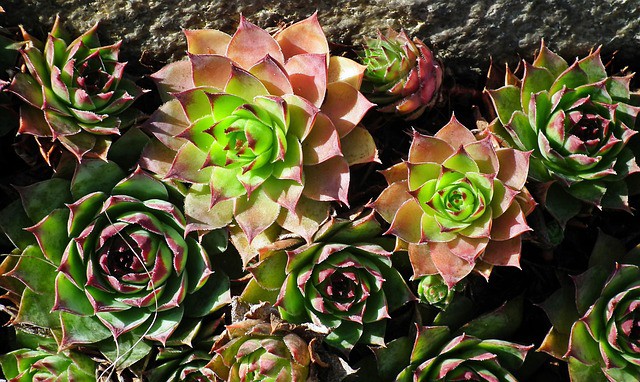
Sedum, commonly known as stonecrop, encompasses a variety of succulent plants that are perfect for ground cover. Their fleshy leaves store moisture, making them incredibly drought-resistant and ideal for low-maintenance gardens. With a diverse array of species, Sedum can generate attractive foliage and vibrant flowers to catch the eye.
Rabbits tend to avoid Sedum due to its tough texture and the high water content in the leaves, which can be unappealing to them. Sedum thrives in full sun and well-drained soil, making it a perfect addition to rock gardens or areas with poor fertility. Furthermore, they attract beneficial insects like butterflies and bees, providing additional ecological advantages.
Creeping Phlox
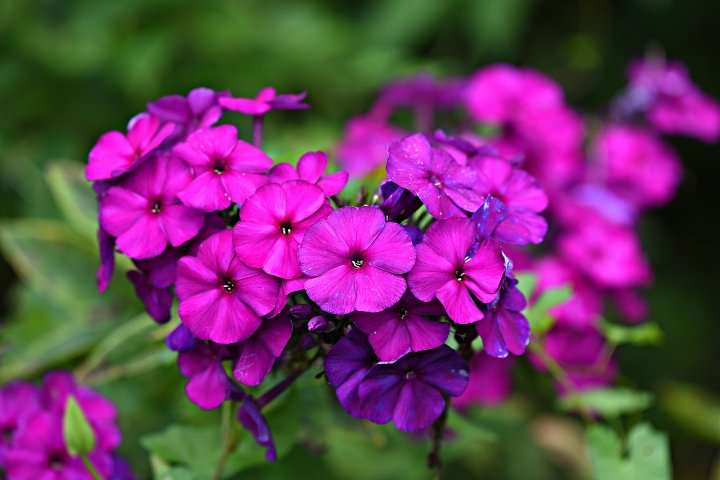
Creeping Phlox is a staple in the world of ground covers, renowned for its vibrant flowers and ability to spread quickly. Known scientifically as Phlox subulata, this perennial forms a dense mat of green foliage adorned with colorful star-shaped flowers in the spring.
Rabbits often skip over Creeping Phlox due to its aromatic foliage and the presence of sap that is less appealing to them. This ground cover flourishes in well-drained soil and full sun, making it an excellent option for rock gardens, borders, or pathways. Its beautiful blooms can transform dull landscapes into a sea of color, creating a welcoming environment for garden visitors.
Creeping Juniper
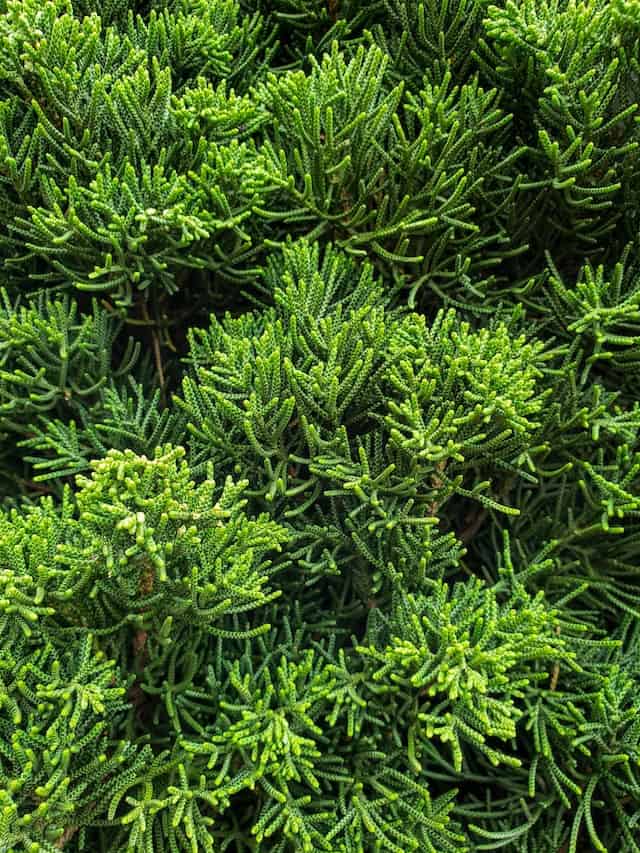
Creeping Juniper is a hardy evergreen ground cover that adds both structure and texture to your garden. This low-growing conifer is effective at preventing soil erosion due to its extensive root system, making it a practical choice for sloped areas.
Rabbits typically avoid Creeping Juniper because its needle-like leaves can be prickly. This resilient plant prefers well-drained, sandy soils and thrives in full sun. Beyond its rabbit-resistant qualities, it offers excellent year-round greenery and serves as a foundation for many landscape designs, providing a backdrop for seasonal flowers and plants.
Bleeding Heart
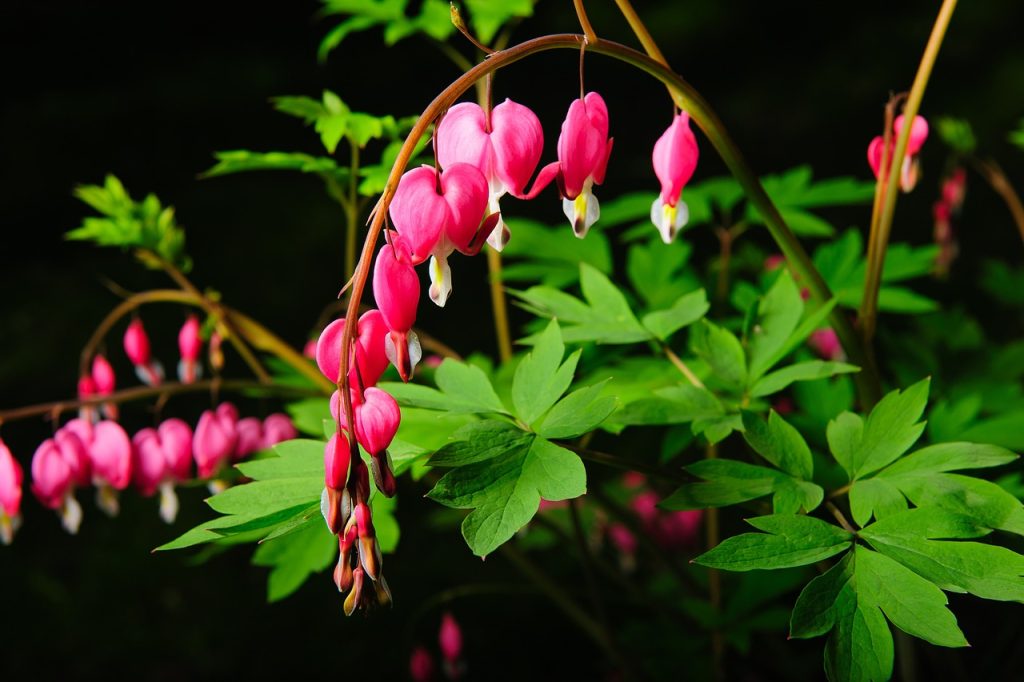
Bleeding Heart, or Dicentra spectabilis, is a unique perennial with heart-shaped flowers that dangle delicately from arching stems. The pink or white blooms appear in spring and can add an enchanting aspect to any garden space.
Despite its delicate appearance, Bleeding Heart is often left untouched by rabbits due to its potentially toxic nature. The foliage grows best in partial shade and rich, well-drained soil, making it an excellent option for shaded garden spots or woodland gardens. Its distinct visuals create a lovely contrast with other flowering plants, enhancing the beauty of your garden while providing protection from eager rabbits.
Lungwort
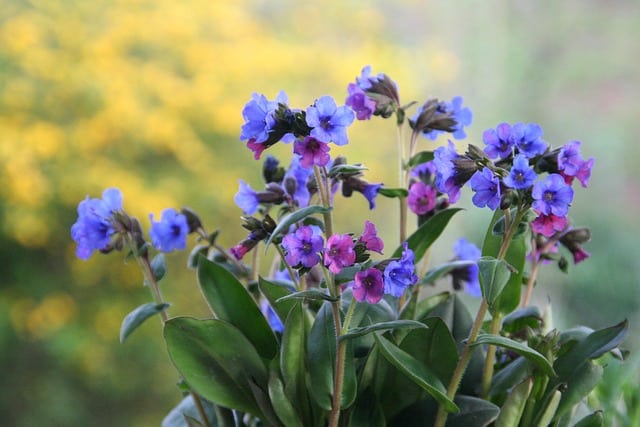
Lungwort, or Pulmonaria, is a perennial ground cover that showcases speckled leaves and clusters of small, tubular flowers ranging from blue to pink. Lungwort thrives in shady, moist environments, making it a perfect addition for those challenging areas beneath trees or under eaves.
Rabbits tend to avoid this plant because of its slightly hairy texture and the presence of milky sap, which can deter nibbling. Apart from its rabbit resistance, Lungwort has excellent ground-covering capabilities and also serves to attract pollinators such as bees, creating not just a barrier against rabbits but an active ecosystem within your garden.
Bee Balm
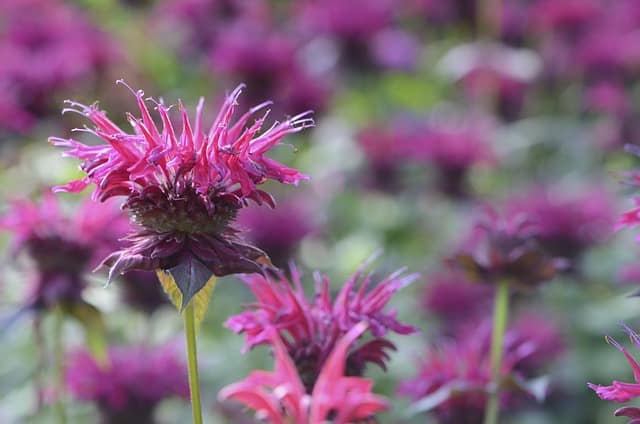
Bee Balm, scientifically known as Monarda, is a vigorous perennial that thrives in sunny environments and is famous for its fragrant flowers reminiscent of mint. The flowers bloom in various colors, including red, pink, purple, and white, attracting bees, butterflies, and hummingbirds.
Rabbits usually bypass Bee Balm due to its strong scent, which acts as a natural repellant. This plant flourishes in a range of soil conditions but prefers moist, well-drained environments. Its vibrant color and ability to attract wildlife not only enhance your garden but create a lively habitat for sustainable gardening practices.
Coneflower
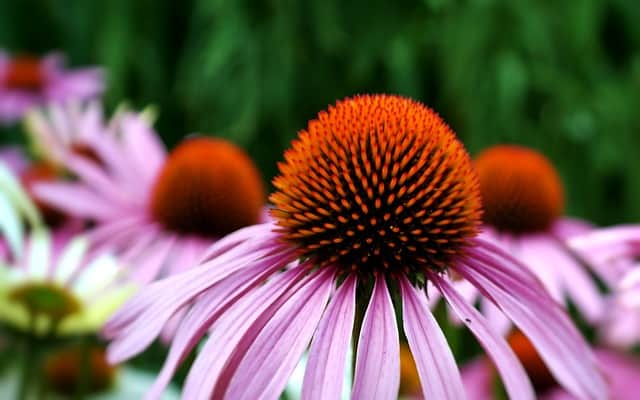
Coneflower, or Echinacea, refers to a range of drought-resistant perennials known for their daisy-like blossoms and longevity. The sturdy flowers are typically a brilliant purple but can also be found in white, yellow, and red hues, providing a feast for the eyes throughout the summer months.
Rabbits tend to avoid Coneflowers because they have a tough texture and bitter taste, both of which make them less appealing. They thrive in a variety of soil types and require full sun for optimal growth. Beyond their resistance to rabbits, Coneflowers produce seeds that feed birds in the winter, contributing to a dynamic ecosystem in your garden.
Lavender
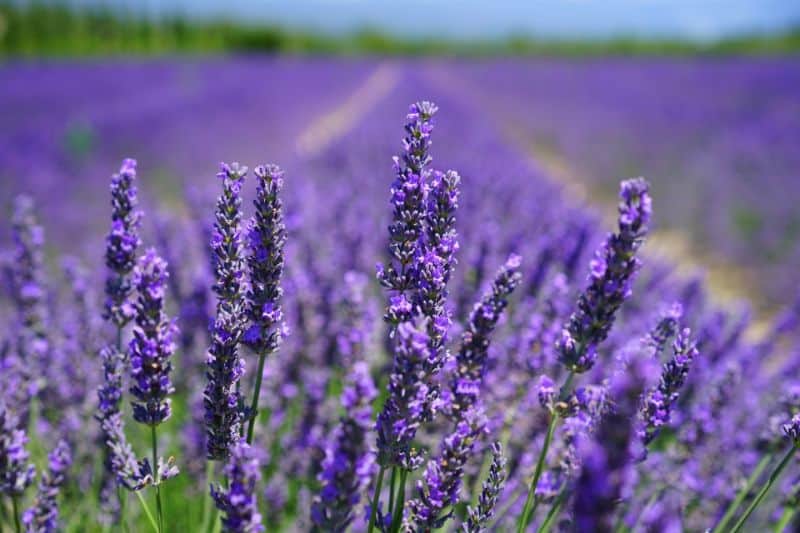
Lavender, a beloved herb, is equally cherished for its stunning appearance and aromatic charm. The slender spikes adorned with purple flowers create a serene presence in any landscape. Beyond its visual appeal, the scent of lavender is known to repel various pests, including rabbits.
Rabbits typically stay away from lavender due to the plant’s strong and pungent aroma, which makes the foliage unappealing to them. Lavender thrives in sunny locations and well-drained soils, making it easy to cultivate in various settings, from herbal gardens to ornamental borders.
Sweet Woodruff
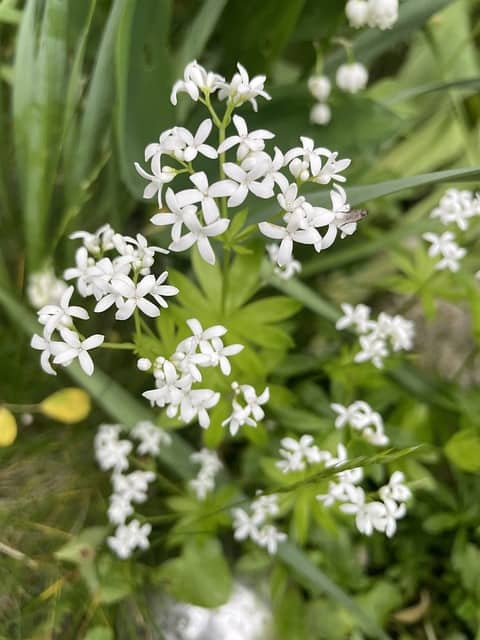
Sweet Woodruff is a perennial ground cover that exhibits delicate white flowers and whorled foliage that creates a lush carpet effect. Its sweet-scented leaves release a pleasant fragrance when crushed, commonly used in potpourri.
Despite its charming appearance, rabbits are generally deterred by Sweet Woodruff’s slightly bitter taste. This plant prefers moist, shady environments and spreads easily, filling in bare spots with its vibrant green foliage. Sweet Woodruff is also great for planting in shaded woodland areas, creating a durable ground cover that withstands rabbit grazing.
Hardy Geranium
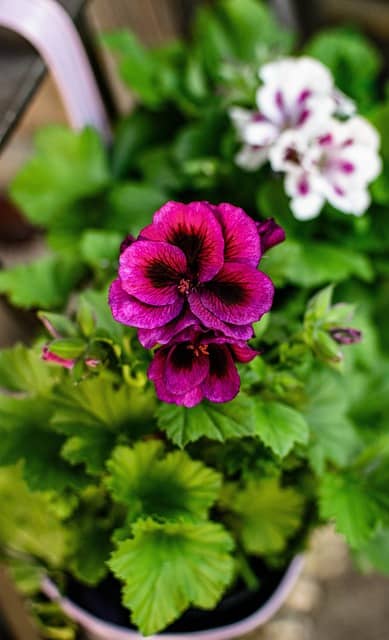
Hardy Geranium, often referred to as Cranesbill, is a low-maintenance perennial that displays a delightful array of pink, purple, and blue flowers that bloom throughout the spring and summer months. Its intricate foliage provides a lush backdrop that complements both flowering and foliage plants.
Rabbits show little interest in Hardy Geraniums due to their tough, leathery leaves that are less palatable. This plant thrives in well-drained soil and full sun to partial shade, making it versatile enough for various garden settings. They also serve as excellent ground covers, suppressing weeds and filling spaces beautifully.
Catmint
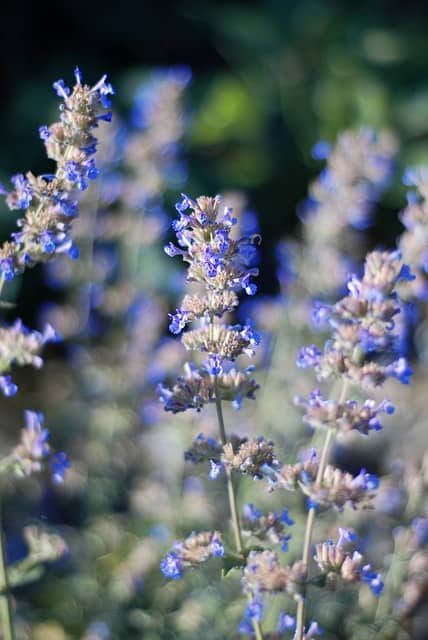
Catmint, or Nepeta, is a perennial that is easily recognizable for its aromatic foliage and lavender-blue flowers that bloom throughout the summer. In addition to attracting pollinators like bees and butterflies, Catmint has a reputation for being a rabbit-resistant plant due to its fragrant leaves.
The strong aroma of Catmint often deters rabbits, making it an excellent choice for repelling these garden nuisances. Catmint thrives in full sun and well-drained soil, making it an ideal plant for sunny borders, rock gardens, or herb gardens. Furthermore, its long blooming period and vibrant color make it a must-have for any garden designer.
Pachysandra
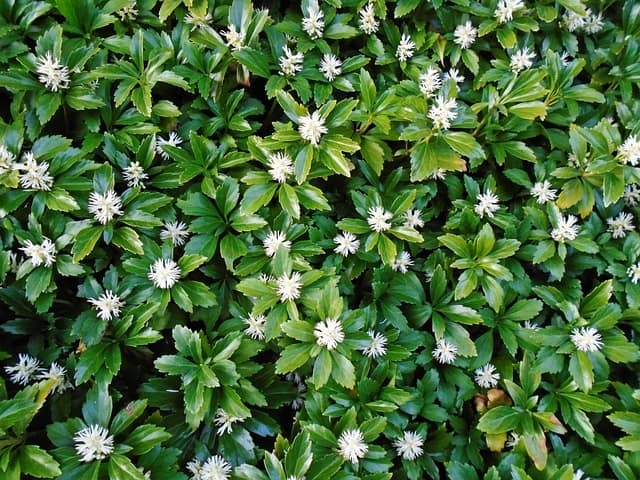
Pachysandra is a classic evergreen ground cover known for its resilience and dense growth habit. It forms a lush green carpet that remains attractive year-round, which makes it a popular choice for shady areas under trees or near buildings.
Rabbits are usually uninterested in Pachysandra as its glossy leaves and growth habit aren’t appealing to them. This plant prefers moist, well-drained soil and does best in partial to full shade. Its ability to withstand adverse conditions while providing continuous greenery creates an evergreen solution to garden challenges.
Lyreleaf Sage
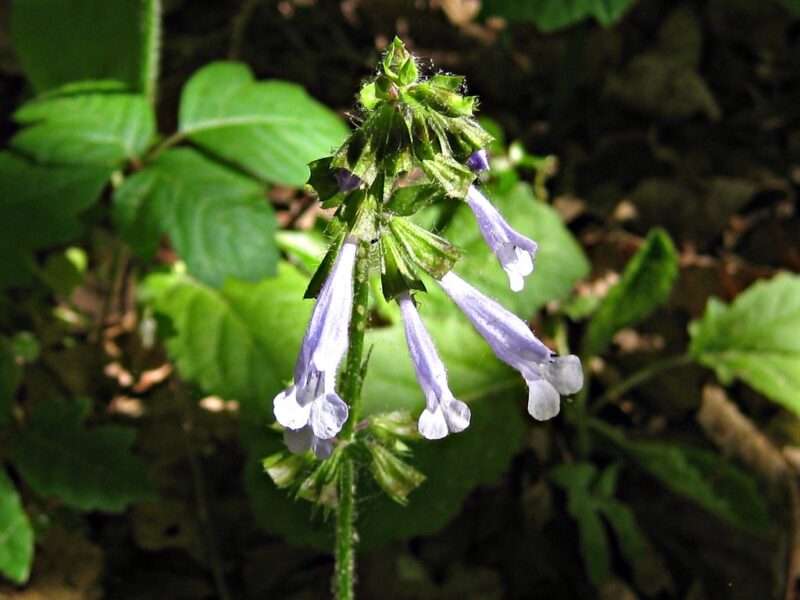
Lyreleaf Sage, or Salvia lyrata, is a striking perennial known for its attractive foliage and tall flower spikes adorned with purple blooms that attract pollinators. It thrives in various soil types and can flourish in both sunny and partially shaded environments.
Rabbits tend to avoid Lyreleaf Sage due to its slightly fuzzy leaves and the fact that it is part of the mint family, which possesses aromatic qualities. This plant is an excellent choice for filling in ground cover while also contributing to the landscape’s biodiversity, attracting a range of beneficial insects in addition to being rabbit resistant.
Wormwood

Wormwood, or Artemisia absinthium, is a hardy and drought-resistant perennial known for its silvery-gray foliage and distinct aroma. Its aromatic leaves are often used in cooking and various herbal remedies.
The bitter taste of Wormwood is largely unappealing to rabbits, making it an effective deterrent in the garden. This plant prefers well-drained soil and full sun, making it suitable for dry and rocky areas. The unique color of its leaves complements other flowering plants, adding both beauty and function to gardens.
Russian Sage
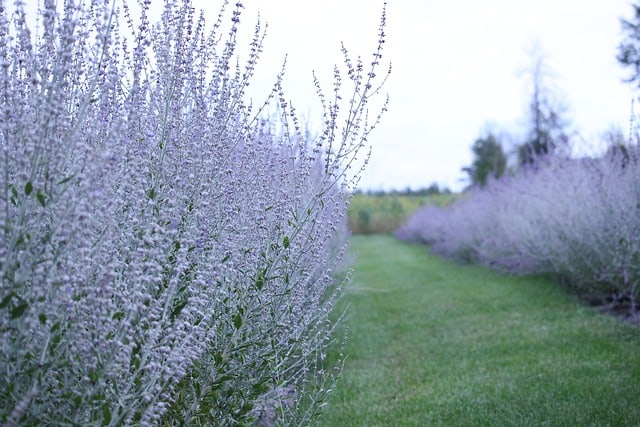
Russian Sage, or Perovskia atriplicifolia, is an excellent perennial ground cover that is adored for its aromatic foliage and spikes of lavender flowers. This drought-tolerant plant thrives in poor soils and full sun, making it ideal for dry landscapes.
Rabbits shy away from Russian Sage due to its strong scent and the texture of its leaves. This plant not only creates a lovely display but also serves as a windbreak, enhancing the garden’s function and aesthetic appeal. The long-lasting purple blooms make it a favorite among gardeners looking to combine beauty with practicality.
Lamb’s Ear
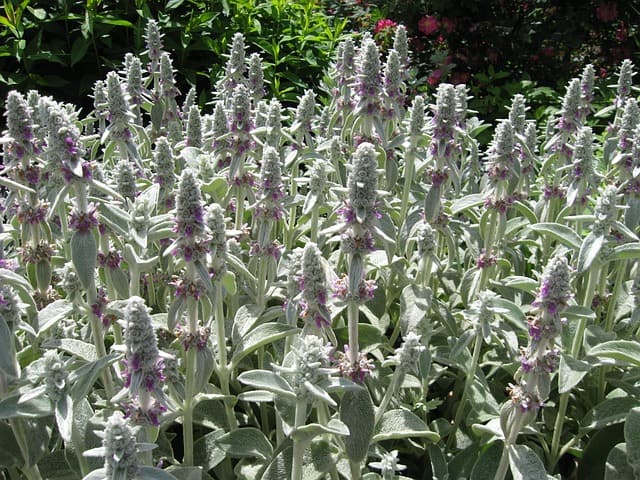
Lamb’s Ear, or Stachys byzantina, is a perennial plant known for its velvety soft foliage that resembles a lamb’s ear, hence its name. This plant produces tall spikes of purple flowers in spring and summer, adding a striking contrast against its silvery-green leaves.
Rabbits typically avoid Lamb’s Ear due to its fuzzy texture and the mild aromatic scent of its leaves. This resilient plant enjoys full sun and can thrive in sandy or well-drained soil, making it perfect for various garden designs. Its unique foliage and flowering display offer great beauty while acting as a natural deterrent to rabbits and other pests.
Creeping Thyme
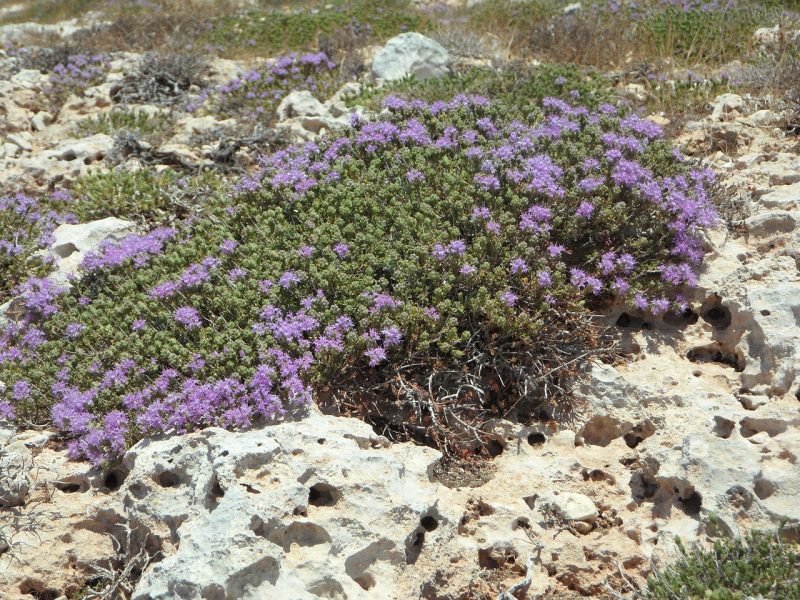
Creeping Thyme, or Thymus serpyllum, is a fragrant herb that offers the dual benefit of being a culinary delight and a stunning ground cover. This low-growing plant showcases purple blooms and is often used in pathways, rock gardens, and drought-resistant areas.
Rabbits often steer clear of Creeping Thyme due to the aromatic compounds found in its leaves, which deter them from taking a nibble. This plant thrives in full sun and well-drained soil, making it an excellent choice for gardeners seeking fragrant and functional ground cover. Its low profile softens garden edges while emitting a delightful scent when stepped upon.
Creeping Foxglove
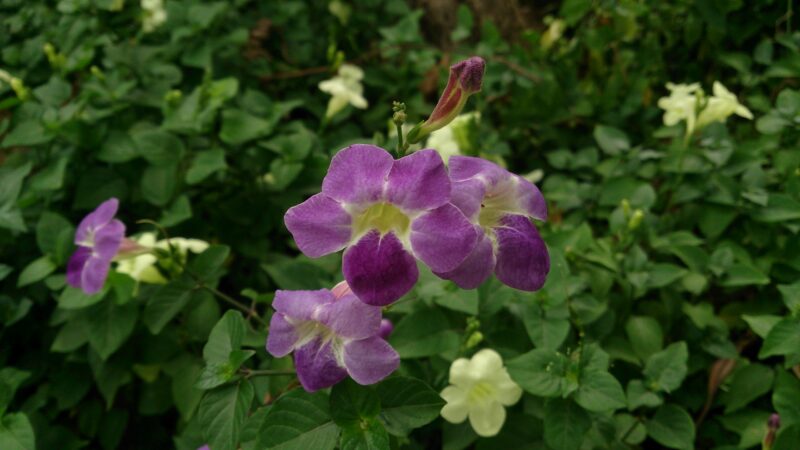
Creeping Foxglove is a unique and attractive option for ground cover characterized by its tall spikes of flowers. Although it’s a biennial, it can self-seed and spread, creating a beautiful display over time.
Rabbits are generally deterred by Creeping Foxglove as it contains compounds that can be harmful if ingested. This plant prefers partial shade and well-drained soil, often thriving in woodland gardens. With its striking flowers set against a backdrop of lush foliage, Creeping Foxglove adds a dramatic touch to gardens while providing a rabbit-resistant option.
Columbine
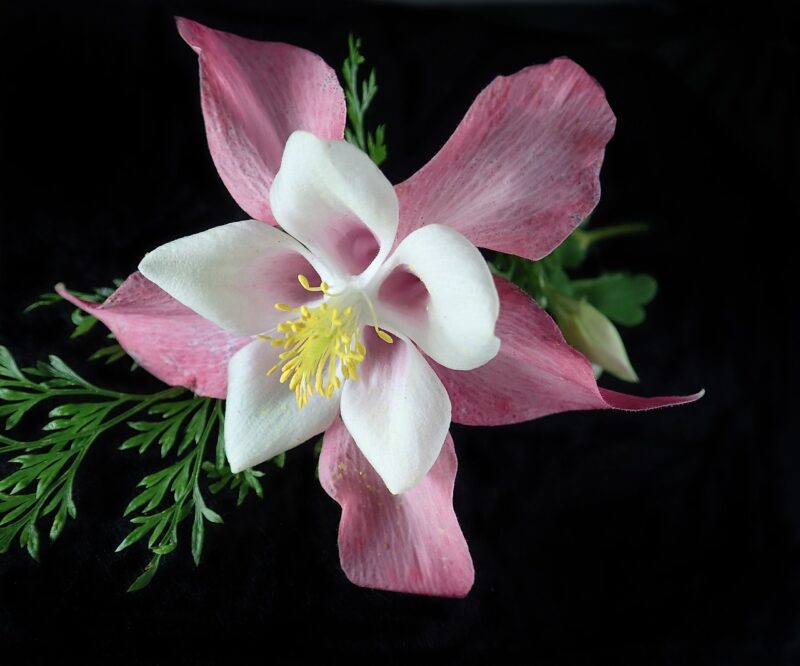
Columbine is a perennial plant recognized for its delicate, bell-shaped flowers that come in a variety of colors, making it a favorite among gardeners seeking to attract pollinators. This plant thrives in shaded areas and is an excellent option for woodland gardens.
Rabbits tend to eschew Columbine due to its toxic properties, making it another safe choice for gardens challenged by these pests. This plant prefers well-drained soil and can adapt to various lighting conditions, enabling it to flourish in diverse garden settings. Its unique shape and color palette will enrich the aesthetics of any garden while aiding in deterring rabbits.
Liriope
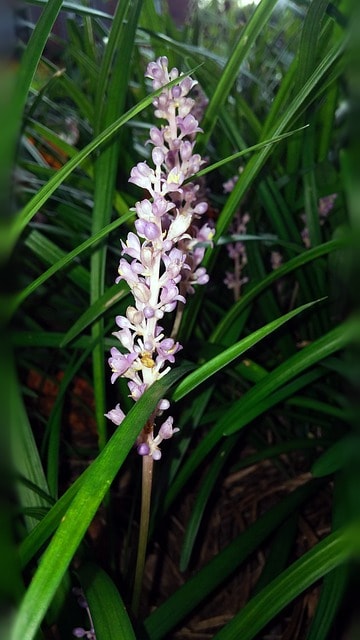
Liriope, often referred to as “monkey grass,” is a hardy perennial that serves as a fantastic ground cover. With grass-like foliage and spikes of purple flowers, it adds texture and interest to any landscape.
Rabbits avoid Liriope due to its coarse texture, which isn’t as palatable as softer foliage. This plant thrives in a variety of soil conditions, making it adaptable for gardens exposed to both full sun and partial shade. Its dense growth can help suppress weeds and provide a lush, green carpet, creating an inviting atmosphere in which rabbits will typically not venture.
Catnip
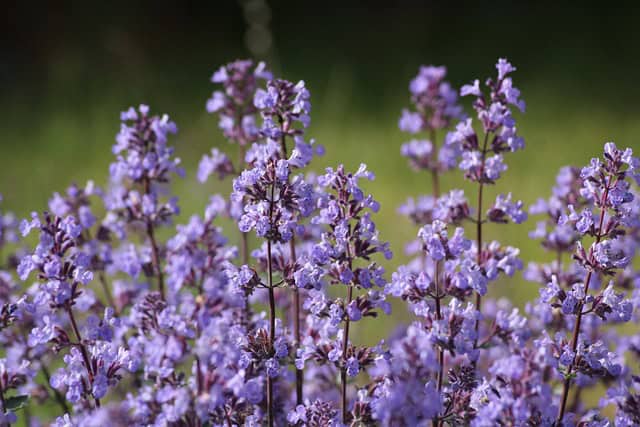
Catnip is renowned for its ability to attract cats and repel various pests, including rabbits. This perennial herb features soft, fuzzy leaves and spikes of lavender flowers that are both beautiful and aromatic.
Rabbits often avoid Catnip due to its distinctive scent, which works as a natural deterrent. Growing well in full sun and well-drained soil, Catnip is an easy-to-care-for plant that can enhance the biodiversity of your garden. Beyond its rabbit-resistant qualities, it can also attract beneficial insects, enriching the garden ecosystem.
Blue Oat Grass
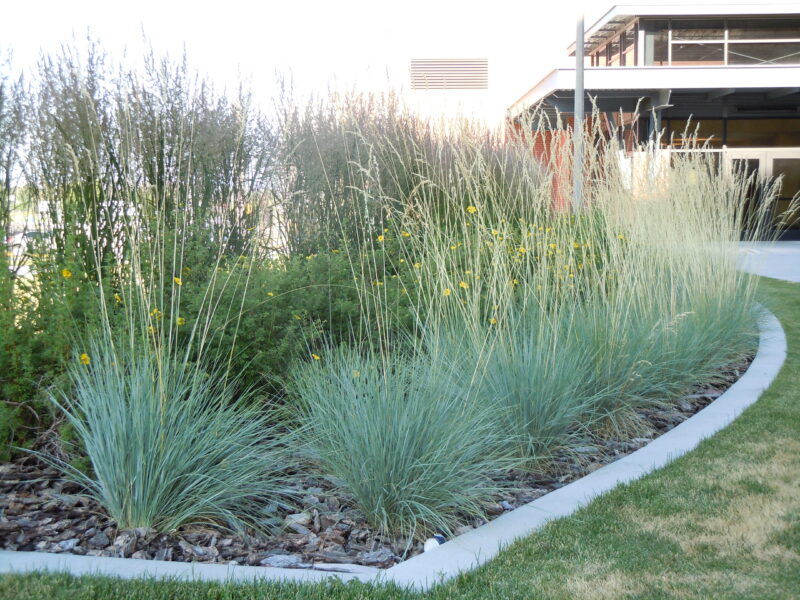
Blue Oat Grass, or Helictotrichon sempervirens, is a beautiful ornamental grass known for its blue-green foliage and graceful arching shape. This grass is adaptable to a variety of soils and can thrive in poor conditions while maintaining its aesthetic appeal.
Rabbits tend to avoid Blue Oat Grass because of its texture and the fact that it grows where they might not typically roam. This grass prefers full sun and can be an excellent addition to rock gardens, borders, or as a filler plant. Its unique coloration provides a striking contrast to flowering plants, enhancing the overall visual interest of your garden.
Northern Sea Oat Grass
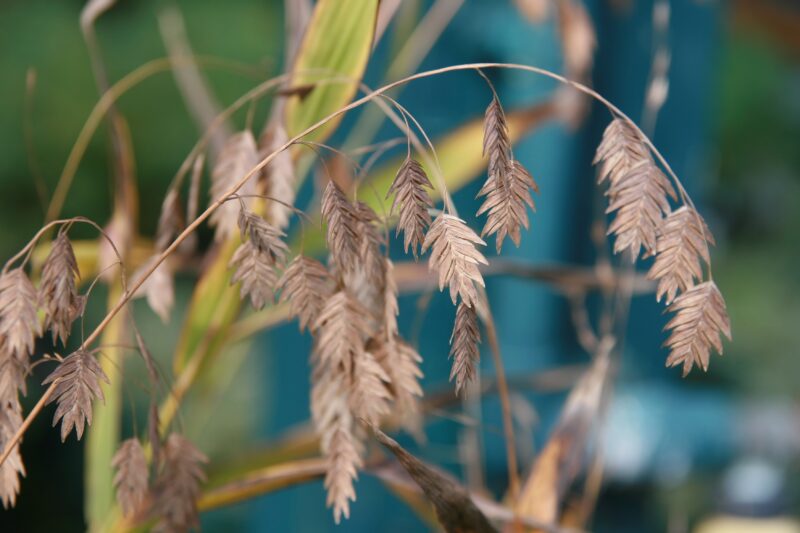
Northern Sea Oat Grass, or Chasmanthium latifolium, is another excellent grass option known for its attractive arching seed heads. This native grass thrives in partly sunny to shady environments and can easily adapt to moist or well-drained soils.
Rabbits typically avoid Northern Sea Oat Grass due to its texture and the fact that it does not resemble their typical forage. This grass adds height and movement to the garden, making it an excellent option for creating a dynamic landscape that remains resistant to rabbit grazing.
Buffalo Grass
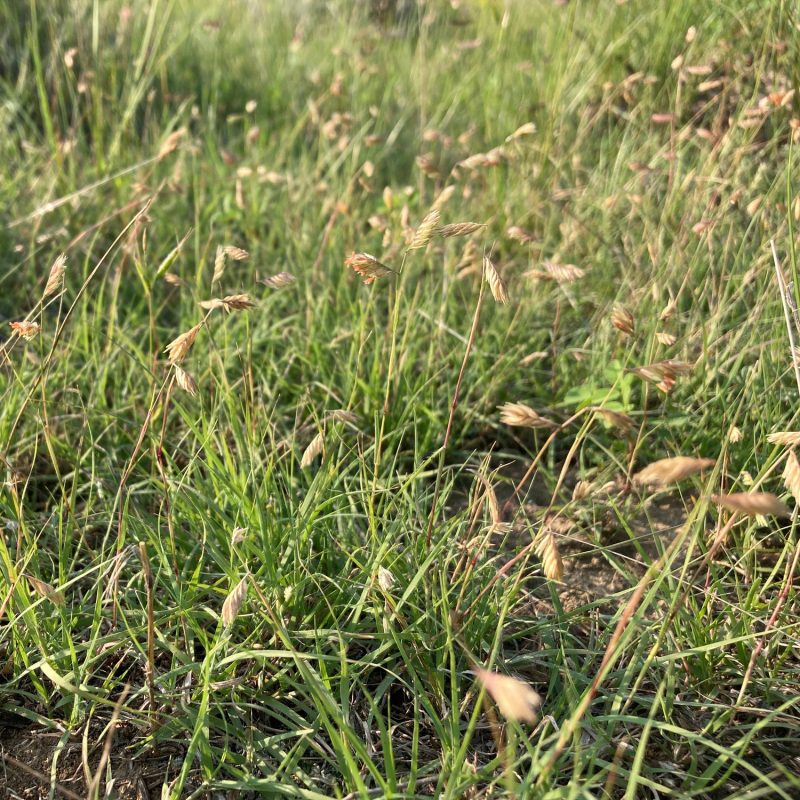
Buffalo Grass, or Bouteloua dactyloides, is an excellent choice for those looking to create a hardy, drought-resistant lawn. Native to the Great Plains, this turfgrass is known for its low maintenance and adaptability to poor soils.
Rabbits are generally unimpressed by Buffalo Grass due to its coarse texture and lower palatability compared to other grass varieties. This grass prefers full sun and is highly efficient in water usage, becoming increasingly popular among eco-conscious gardeners looking to minimize water consumption while maintaining a beautiful lawn.
Emerald Gaiety Euonymus
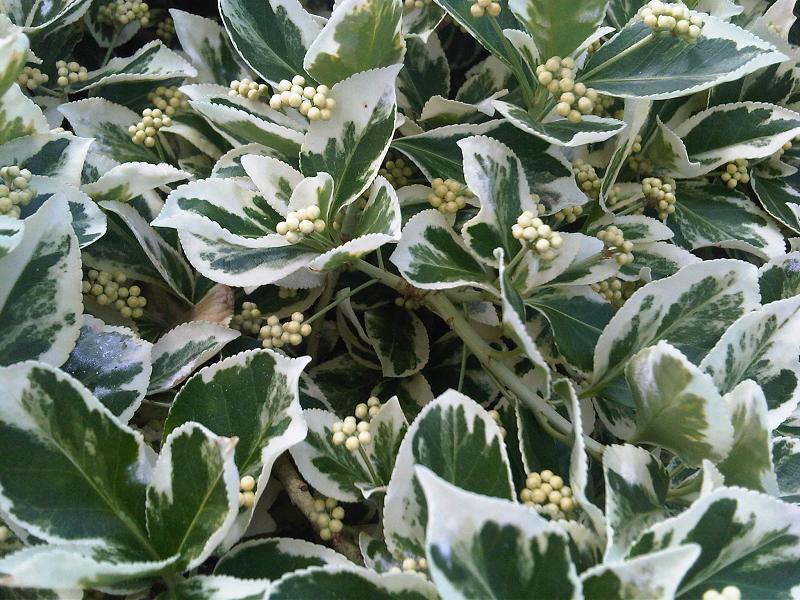
Emerald Gaiety Euonymus is a versatile evergreen shrub noted for its attractive variegated foliage. This low-growing plant makes for a perfect ground cover, maintaining its color year-round and contributing visual interest to the landscape.
Rabbits typically avoid this variety of euonymus due to its bitter taste, making it a reliable choice for gardens susceptible to rabbit nibbling. This plant thrives in a variety of soil types and tolerates both full sun and partial shade, offering a consistently appealing option for ground cover alongside its ability to deter hungry rabbits.
Yellow Loosestrife
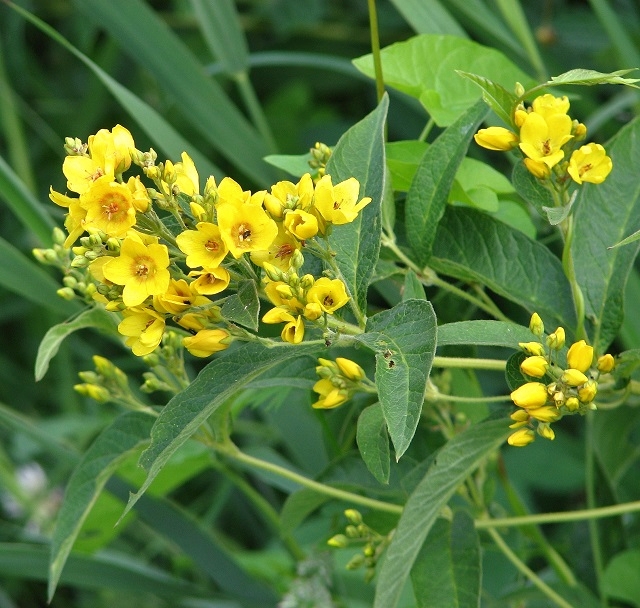
Yellow Loosestrife, or Lysimachia punctata, is a perennial plant recognized for its bright yellow flowers that bloom from late spring through summer. With a clumping growth habit, it adds a splash of color to damp areas and attracts pollinators.
Rabbits tend to avoid Yellow Loosestrife owing to its robust growth and potential toxicity. Preferring moist to wet soil, this plant can thrive in areas that are often challenging for other plants, making it an excellent option for garden beds that experience poor drainage. It provides beautiful blooms while creating a barrier against rabbit activity.
Sweet Alyssum
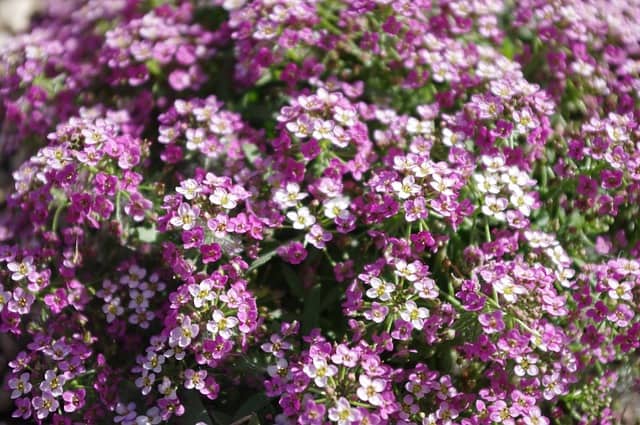
Sweet Alyssum, or Lobularia maritima, is a charming annual plant that produces clusters of tiny, sweet-smelling flowers in shades of white, pink, and purple. This low-growing plant creates a delightful carpet of flowers that blooms throughout the growing season.
Rabbits generally avoid Sweet Alyssum due to its fragrance and texture. It prefers full sun and well-drained soil but can also adapt to a range of environments. The presence of this plant in your garden not only enhances the visual warmth but also attracts beneficial pollinators, creating a vibrant eco-friendly space.
Licorice Plant, Helichrysum petiolare
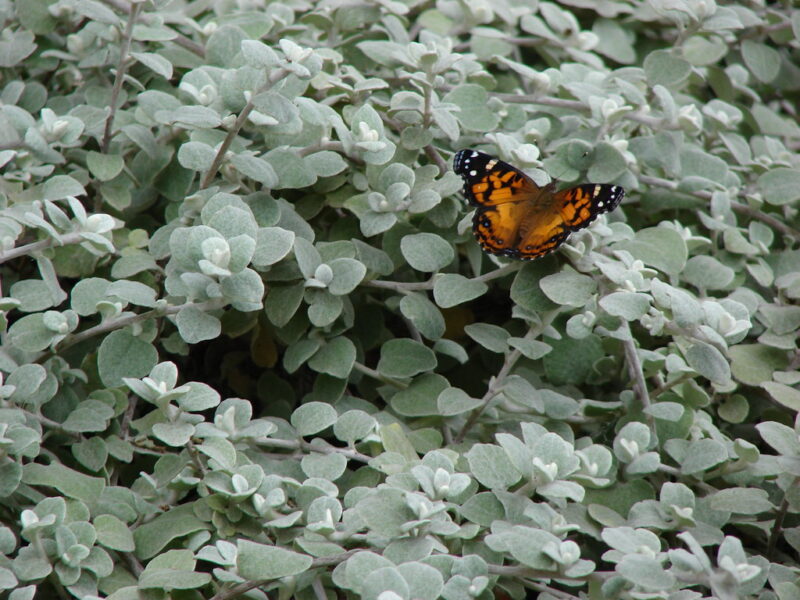
Licorice Plant, or Helichrysum petiolare, is a trailing perennial characterized by its silvery, fuzzy leaves and strong aroma. This adaptable plant makes an excellent ground cover, providing texture and contrast in garden designs.
Rabbits are often repelled by the Licorice Plant’s scent and texture, making it a suitable option for those looking to fortify their gardens against unwanted nibblers. It thrives in full sun and well-drained soil, making it a low-maintenance choice for enhancing beauty while deterring rabbits from your prized plants.
Lily of the Valley
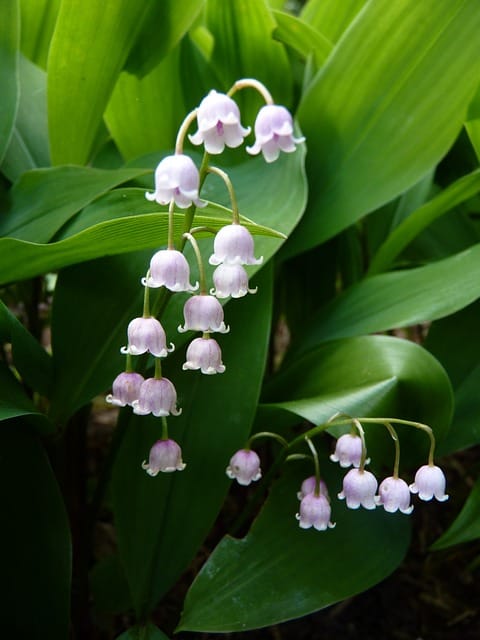
Lily of the Valley, or Convallaria majalis, is a perennial ground cover known for its delicate, fragrant white flowers that bloom in spring. This plant is well-suited for shaded areas and produces lush, green foliage throughout the growing season.
Rabbits typically avoid Lily of the Valley due to its toxicity; its leaves and berries can pose a danger if ingested. The ability of this plant to flourish in shady and moist environments complements its rabbit-resistant qualities. The classic attractiveness of its blooms adds timeless beauty to any garden setting while providing sanctuary from hungry rabbits.


